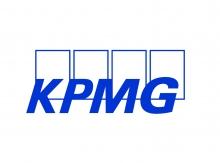Governments in the twenty-first century are under pressure to operate better. This has been brought about by a wide array of societal and technological changes, ranging from globalization and the information technology (IT) revolution to demographic change and rising public expectations. As citizens the world over become more demanding, public sector organizations are being forced to focus on performance.
This white paper – based on a major international survey and in-depth interviews with senior civil servants – reviews how governments in Australia, Canada, Germany, the UK and the US are working to improve their operational efficiency. It examines what the priorities are, where the main obstacles lie, and what strategies work best to overcome them.
Some of the key findings include:
- Governments are focused on quality of services, ahead of value for money. Across much of the public sector, service quality and improved productivity are the imperatives. This is especially true for front-line services such as education or health. These priorities come in ahead of greater transparency and accountability and better value for money – although all of these remain important. Given the overall focus on service quality, it is a surprise to discover that although many departments have a formal system for feedback, some do not, or don’t know if they have one or not.
- Current efficiency projects may not be the ones that deliver the most benefits. The report highlights a possible mismatch between the initiatives currently under way in the public sector, and those that executives believe provide the biggest benefit. For example, much attention is paid to competitive sourcing and e-government schemes, even though these are perceived as providing limited efficiency gains, whereas human capital management and process re-engineering are acknowledged to provide clear benefits.
- IT can do much to boost productivity, but is held back by poor management and a lack of skills. Technology can enhance productivity, but the public sector suffers too many problematic IT projects. Poor management of IT initiatives, along with little or no choice of available technologies, is part of the problem. Another issue is the ongoing difficulty involved in determining the true costs and benefits of projects. It does not help that only a limited number of technology vendors are big enough to cope with the demands and scale of public sector projects.
- Private financing and user fees are favored over direct taxation. As a clear signal that the revenue-side of government is also open to innovation, respondents indicate that public-private partnerships and private finance initiatives are seen as more effective than direct taxation when it comes to financing projects more efficiently. When user fees are added to the equation, more than half of all respondents favor a market-based approach to project financing.
- Forecasting the costs and benefits of new projects is a major challenge. Even though governments are keen to do more, they struggle to determine the true benefits and costs of potential projects. Forecasting costs and predicting benefits emerged as two of the top three challenges associated with the funding of projects. In turn, this has a direct impact on a department’s ability to secure spending for new initiatives and ideas. Even where projects have cost reduction as a specific objective, nearly eight out of ten respondents admitted that achieving cost reduction targets was a major/moderate problem.
- The global skills shortage is hitting the public sector. The battle for skills is fast becoming a major problem for many public sector organizations, especially within specialist functions such as IT and procurement. This is particularly vital, given that the strategic management of human capital is regarded as the top measure for delivering efficiency and performance gains.
Overall, government officials indicate their strong commitment to performance, efficiency and innovation. The survey shows that governments are increasingly intent on operating more like the private sector, but in a manner that embraces and respects the unique responsibilities and constraints of the public sector.
And much like their private-sector colleagues, the government performance agenda is characterized by a tough competition for skills, improvement to project management, and a very strong focus on enhancing service delivery.
Interviewed for this report:
- Ursula Brennan, chief executive of the Office of Criminal Justice Reform, UK
- Ken Cochrane, chief information officer for the Canadian Government
- Tony Dean, secretary of cabinet, Government of Ontario, Canada
- Dr David Dombkins, national president of the Australian Institute of Project Management
- Dr Barbara Hendricks, parliamentary state secretary at the Federal Ministry of Finance, Germany
- Ed Killesteyn, deputy president, Repatriation Commission Department of Veteran Affairs, Australia
- Ian McPhee, auditor general of Australia Phillip Prior, chief financial officer, Department of Defence, Australia
- John Thomas, acting director of construction, Washington Metropolitan Area Transit Authority, US
- Sir David Varney, author of public service transformation report, UK
- Ian Watmore, head of the Prime Minister's Delivery Unit, UK
- Danny Werfel, deputy controller in the Office of Management and Budget Office of Federal Financial Management, US
- Wayne Wouters, secretary of the Treasury Board, Canada






